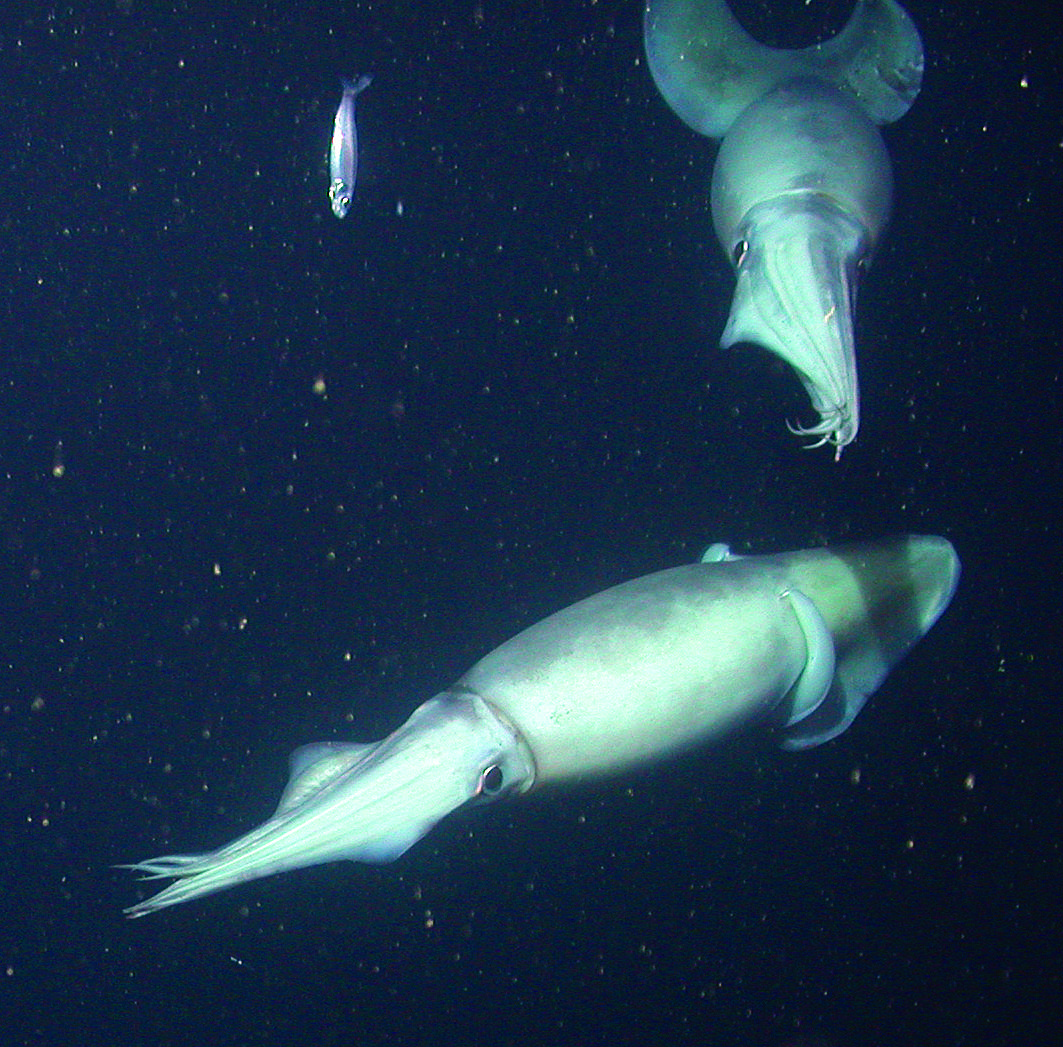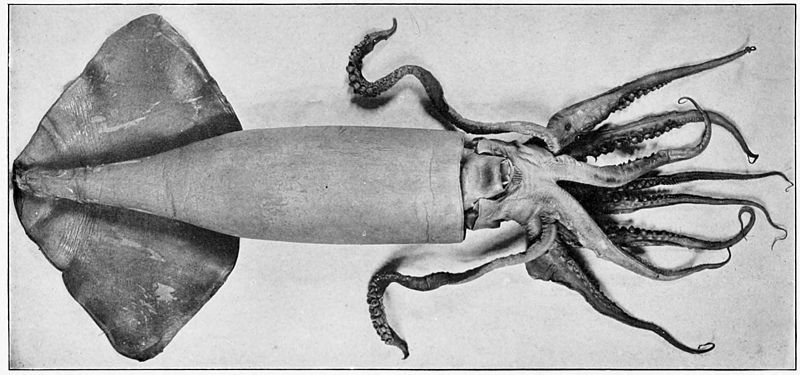
Adaptation
Through the enduring process of evolution, the Humboldt squid
has ended up with several fascinating adaptations that have led
to its success in the ocean.
Nervous System- Neurological axons in Humboldt squid can be up to 1 mm in length. This comparably huge axon allows the neurological signals to work very fast (scientopia.org). Much like how a larger cable conducts more electricity, a larger axon will elicit increased conduction in the Humboldt squid’s brain. The evolution of larger axons in its brain has allowed for an increased action potential. This translates to D. gigas being able to do things like fleeing from predators or catching prey even faster. With this incredible adaptation the Red Devil can become a smarter and faster predator of the animal world.
Vertical
Daily Migration- As revealed in several studies using electronic
tagging, D. gigas spend the majority of their day in deep waters
greater than 250 meters. This is approximately what scientists
have named the hypoxic zone, where levels of oxygen are very low
(Gilly et al. 2006). When daylight fades, the squids rise
together into higher oxygen saturated areas and feed upon
unsuspecting prey such as lanternfish. What is truly interesting
is that the Humboldt squid is doing most of its foraging in this
Hypoxic zone where there is less than 5% oxygen levels. D. gigas
has adapted its physiology to suppress oxygen consumption up to
90% and slow metabolism during its descent into the
hypoxic zone. The exact physiological and biochemical
adaptations remain a mystery and further research into this
incredible evolutionary path is needed.
Tentacles- Each of the Humboldt squid’s tentacles are lined with suckers designed to grab and hold on to their prey. This adaptation is used primarily for hunting and subduing other animals in order for consumption. Humboldt squid are constantly eating, they live for on average a year and grow to up to five feet in length. D. gigas grows at an astonishing rate throughout their relatively short life. Their tentacles have adapted to assist this high growth rate by facilitating the catching of various animals.
Beak- After being entangled within the web of tentacles, D. gigas has an equally fearsome beak structure designed especially for ripping apart and swallowing flesh. This beak is made out of very hard calcium carbonate and positioned for efficient feeding potential. Paired with the long, muscular tentacles, these adaptations make Dosidicus gigas into a fearsome marine predator.
Chromatophores- The ability to camouflage oneself is a very useful adaptation in the wild. This skill can both help catch meals and keep from becoming one. The Humboldt squid have pigment-containing organelles called chromatophores that allow it to change color rapidly. This color change brought on by the chromatophores can be used to hide from predators and prey, or be used as a means of communication between squid (animaldiversityweb.com). Humboldts have most notably been seen to undergo metachrosis (changing colors by the expansion of pigment cells) when hunting or stressed (bbc.com). As we can see from this video, metachrosis in Dosidicus gigas can definitely be brought on by a stress response.
Eye- Dosidicus gigas has a very
interesting adaptations in their eye(video). They have
exceptional underwater vision, which has allowed them to become
a fearsome predator. Much like other squid, Dosidicus gigas has
an eye like a camera that is characterized by having a spherical
lens that focuses an image onto the squid’s retina (Sweeney et
al., 2007). The Humboldt squid is a Coleoid and this group has
an eye with the ability to form images in a variety of light
conditions. They have ocular adaptations that include a variable
pupil aperture that helps the eye respond so quickly to
different surroundings (McCormick and Cohen, 2011). The
Humboldt squid’s eye is comparatively very large because of its
increased size. With this larger eye comes an equally large
retina and pupil structures that allow for increased light and a
better quality image.
A suitable description of D. gigas comes from a very prominent figure in their study, William Gilly. “I find their adaptability and their perfection in dealing with anything nature throws at them to be a remarkable feature. They’re able to explore and take advantage of new environments that are compromised in any way.”